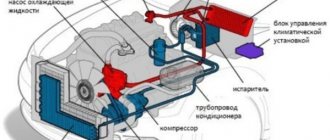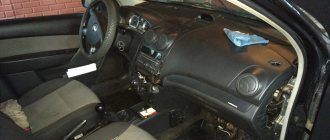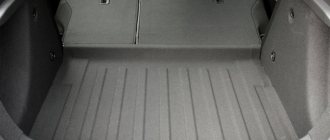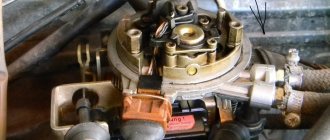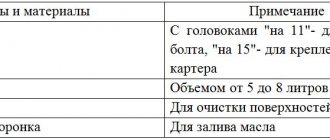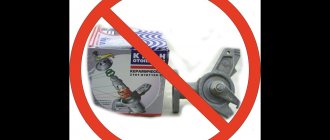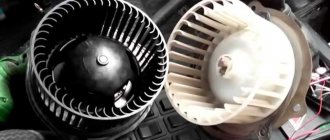✅ This work is done by our Master-GM Technical Center. You can make an appointment for interior heater repair by phone -?
✅ Repair of the Chevrolet Cruze heater damper. Interior heater repair. Today we are visiting a restyled Chevrolet Cruze, which still has the same symptoms of a faulty interior heater - the heater on the driver's side has stopped heating. We are familiar with this problem of Cruzes firsthand; we have already cured more than 200 cars from similar faults. Therefore, if you have problems with the heater on your Chevrolet, you can safely contact us. Previously, I have already talked in detail about the reasons for the breakdown of the stove on the Chevrolet Cruze and Orlando and about repairing the stove on the Chevrolet Orlando.
Correct repair of the stove in a Chevrolet Cruze
Chevrolet Cruze cars are manufactured with the Russian climate in mind. High-quality operation of the heating system is a prerequisite for comfortable operation of the machine in winter and off-season. If malfunctions occur in its operation, then immediate repair of the Chevrolet Cruze stove is required. Otherwise, normal driving with poor visibility through the foggy glass will not be possible.
Do-it-yourself Chevrolet Cruze stove repair - we explain in general terms
The Chevrolet Cruze is a car created with an eye on the Russian market. It is not surprising that quite a few of these cars roam our roads, and on the Internet, drivers are actively discussing the advantages and disadvantages of this model. The weak point of the Chevrolet Cruze is the heating system, the professional repair of which is quite expensive. Let's take a closer look at the most common malfunctions of the stove on the Chevrolet Cruze and figure out which of them can be fixed with your own hands.
The design of the heating system of a Chevrolet Cruze car
The Chevrolet Cruze is equipped with a liquid-type heating system. That is, cooling is carried out due to heat transfer from the coolant (coolant). The cooling radiator is connected to the heater radiator via two hoses. They are led through the engine compartment to the area under the central part of the front panel, where the climate unit is located, which includes a stove and air conditioning.
The heater on the Chevrolet Cruze is located in the usual place - under the front panel
The flow of air heated from the radiator moves through a system of pipes and air ducts. It is pumped by the heater fan, after which the air passes through the heater radiator and, with the help of dampers, is directed into the footwells of the driver and passengers, to the air ducts on the instrument panel, as well as to the heated glass air ducts. The Chevrolet Cruze is equipped with heating for the rear of the cabin and the legroom for passengers sitting in the rear.
1 — windshield blower; 2 — flaps for blowing glass and deflectors on the instrument panel; 3 — instrument panel deflectors; 4 — heating of feet; 5 — instrument panel/leg flap; 6 — heater radiator; 7 — cabin filter; 8 — damper of the recirculation system; 9 — air supply box; 10 — cabin air intake; 11 — fan; 12 — fan motor; 13 - evaporator; 14 — drainage for condensate; 15 — damper-temperature regulator; 16 - heating/air conditioning unit housing
Common malfunctions of the Chevrolet Cruze heater
It should be noted that the vast majority of breakdowns on the Chevrolet Cruze are associated with the draft of the stove damper. The fact is that the eye on this rod is made of cheap and very fragile plastic, which easily breaks in thirty-degree frost. This results in several problems listed below.
Video: broken rod on the Chevrolet Cruze stove damper
The stove only blows cold air
The air duct on modern Chevrolet Cruze cars after restyling is divided into two sections - left and right. Consequently, each section has its own heating damper. There are also two control rods attached to these dampers. One on the driver's side, the other on the passenger's side.
If the heater on a Chevrolet Cruze only blows cold air, it means that the rods on both dampers have broken, they have dropped to the lowest position, where they remain. For this reason, cold air begins to blow on the feet of both the driver and the passenger, and a small part of the hot air goes to the windshield.
Video: double stove dampers of a modern Chevrolet Cruze
The stove blows cold and hot air
The situation when the Chevrolet Cruze heater begins to blow cold air on the driver and hot air on the passenger (or vice versa) is observed if the draft breaks on only one of the heating dampers, while the second is normally controlled by its servo drive. The problem is solved by disassembling the heating system and repairing the broken draft.
Leaking pipes on the Chevrolet Cruze radiator
Another common malfunction is leaking pipes on the Chevrolet Cruze stove radiator. This happens because the quality of the O-rings on these pipes leaves much to be desired. And in the harsh domestic climate, these rings become unusable in just three years. After this, coolant begins to flow from under the mounting clamps.
The Chevrolet Cruze pipe leaked due to a worn o-ring
To see the leaks, just look under the hood of the car. The problem is solved by completely replacing the O-rings on all stove pipes. Rubber rings are required, the outer diameter of which is 30 mm and the inner diameter is 25 mm. As a rule, such rings are sold in sets. The cost of one set can vary from 300 to 700 rubles.
Rubber O-rings for heating pipes are usually sold in sets
Problems with the Chevrolet Cruze stove and how to solve them
The Chevrolet Cruze heating system is not reliable. Almost every owner of a car of this model sooner or later encounters a malfunction of the stove.
- the stove does not heat the air;
- the device heats only on the driver's side;
- the stove does not turn on;
- the radiator is noisy;
- The hoses between the heater and cooling radiators are leaking.
Let's take a closer look at each malfunction and instructions for repairing the corresponding components.
Chevrolet Cruze heater does not heat up
If air comes from the deflectors, but does not warm up, you should take a closer look at the heater radiator. And also signs of a malfunctioning heater radiator are:
- reduction of coolant level without visible damage to the cooling radiator and connecting hoses;
- smell of coolant in the cabin;
- condensation on the windshield;
- burning smell in the cabin.
The heater radiator for the Cruze is made of aluminum
Replacing a heater radiator on a Chevrolet Cruze is far from the easiest procedure, but if you are confident in your abilities, you can do it by following the instructions given:
- Drive the car onto an overpass or inspection hole.
- Cool down the engine.
- Open the expansion tank cap.
- Place an antifreeze container with a volume of at least 6.5 liters under the radiator. For two-liter versions, a volume of at least 10 liters is required.
- Unscrew the radiator drain valve. It is located at the bottom of the radiator.
- Drain all coolant.
- Remove the wind deflector seal between the hood and the glass.
- Disconnect all clamps securing wires and tubes from the frill.
- Remove the cover itself. It is held on by bolts and plastic latches.
- Disconnect the heater fan wires and remove the front part of the fan housing.
- Remove the cabin filter housing.
- Remove the antifreeze supply hoses to the heater radiator and the steam exhaust hose.
- Remove the old radiator.
- Install the new radiator and the removed components in the reverse order.
- Refill with new antifreeze.
At the end of the replacement procedure, you need to check all connections and pour new antifreeze into the cooling system, and then evaluate the quality of the work done by turning on the heater.
The air on the passenger side is hot and the air on the driver's side is cold.
Most often, in the Chevrolet Cruze heating system, the damper rod that directs the air flow through the heater radiator or bypass breaks. If the heater operating mode is switched during intense load on the heater fan, a strong air flow affects the damper, creating critical loads. In this case, it is the traction eye that breaks, since it is the least strong point of the entire system. This results in hot air being supplied only from the passenger side. Unheated air comes in from the driver's side.
It's easy to avoid this trouble. Before turning the heating on or off, it is enough to reduce the blowing intensity or turn it off completely. In the event of a breakdown, the only way to restore full functionality of the heating system is repair.
Repair of the Chevrolet Cruze stove - purpose of the element and preparation
The unit consists of a special hole with an air duct, a rod and a motor.
The damper is provided for heat regulation and is located on the driver’s side behind the dashboard. Design of 2 parts with a partition between them. The system is activated specifically by traction. It is connected to a motor controlled by the climate control ECU.
We have already said that it is better to prepare properly before starting work. We briefly described the damper design. If you need to understand in more detail, find detailed information on this issue online. To work you will need:
- screwdrivers (phillips and slotted);
- steel wire (length - 20 mm and cross-section - 4 mm);
- knife;
- glue “Moment”;
- drill (with a 5 mm drill bit).
Repairing the Chevrolet Cruze damper - sequence of actions
First you open the cabin. Find the drawer under the light switching unit, open it and carefully pull it towards you. Please note that the holder latches open with a click, after which the box can be removed. The glove compartment is opened and the lid is removed.
Remove the light block from the opening. This is easy to do by hand as it is held in place by the grooves on the sides. Do not press too hard - there is a risk of breaking the plastic elements.
Disconnect the block and its wires. Remove the element completely. Next, remove the dashboard block (located to the left of the driver's seat). To remove it, pull the cover towards you until you hear a characteristic click. The procedure is the same with the left part. The lower one is held on by 3-7 screws. Unscrew them using a socket with a brush-wrench.
After all these manipulations, the air duct will open. It is secured with a pair of 8 bolts. After removing them, the air duct “goes” down.
Unscrew the servo motor for the heater damper with the 5th head. Heat the knife and cut a hole above the control unit in the plastic cover. This is necessary to access the damper and rod. The latter can be repaired using wire - the most affordable way at home. It allows you to attach the element to the traction fragment.
An alternative option is to drill 2 holes in the surviving part with an electric drill, install a steel plate there, securing it with bolts. This method is more reliable, but more difficult to implement.
Upon completion of the repair of the Chevrolet Cruze heater damper, the cut piece of plastic is secured with Moment glue. When it adheres to the elements, treat the seam with sealant. At the finish line, assemble the dashboard in reverse order. If the vents are blowing cold air, check the radiator. Signs of its breakdown are a decrease in coolant without visible leaks, condensation on the windshield, and a burning or refrigerant smell in the cabin.
Furnace damper repair
Before starting work, we will decide on the tools and consumables. Here they are:
- Phillips screwdriver;
- flat blade screwdriver;
- knife;
- a piece of steel wire (length - 20 cm, diameter - 4 mm);
- electric drill with a 5 mm drill bit;
- tube of Moment glue.
Repair sequence
- The car interior on the driver's side opens. There is a small drawer under the light switch block. It opens completely, then gently pulls out towards itself. The plastic latches on which it is held will open with a characteristic click and the drawer can be removed from the niche.
The Chevrolet Cruze glove compartment lid opens completely, then is removed from the niche
You can press the light switch on the Chevrolet Cruze through the glove compartment opening
The light switch on the Chevrolet Cruze should be disconnected from the block with wires
To remove the left trim on the Chevrolet Cruze dashboard, pull it slightly towards you
The lower panel of the Chevrolet Cruze dashboard is held on by three self-tapping screws 7
After unscrewing the fasteners, the Chevrolet Cruze air duct must be carefully moved down
The servo motor for the stove damper on the Chevrolet Cruze is held on by two 5mm bolts
In the repair hole on the Chevrolet Cruze, a broken rod and damper are clearly visible
The easiest way to repair a Chevrolet Cruze rod is a piece of steel wire
Many car enthusiasts repair Chevrolet Cruze rods using steel linings
Upon completion of the Chevrolet Cruze rod repair, the hole is sealed using Moment glue and sealant
Video: repairing the heater damper on a Chevrolet Cruze
Location of the climate control control unit on the Chevrolet Cruze
The climate control control unit is located under the dashboard, to the right of the driver.
This is a rather complex device, so the average car owner will not be able to fix its malfunctions on his own.
This requires the intervention of qualified specialists from a service center who have the necessary diagnostic equipment.
In case of malfunctions with the climate control unit on a Chevrolet Cruze, you cannot do without the intervention of specialists
Troubleshooting methods
Considering the simple design of the heating system, the owner can fix some breakdowns himself and remove the stove heater with his own hands. When the cause of the breakdown is in the winding or damage to the electrical circuit, you need to seek help from a service station specialist.
If you do not have experience in servicing the Chevrolet Cruze, initially entrust the matter to real professionals. If you’ve decided to fix the breakdown, then prepare the tools and consumables. Repair time is one hour, subject to recommendations.
- diagnostics using computer equipment to read system errors of the electronic control unit, their removal, elimination;
- visualization, troubleshooting of lines, air supply channels, checking the level of antifreeze in the expansion tank;
- when the first two stages did not give a positive result - dismantling the front dashboard, removing the stove heater, replacing the damper, lever. Assembly and installation in a regular place.
Diagram 36. Chevrolet Cruze heating, air conditioning and ventilation control unit
Diagram 36. Control unit for the heating, air conditioning and ventilation system
Here are the symbols for this electrical circuit →
Video about “Diagram 36. Control unit for the heating, air conditioning and ventilation system” for Chevrolet Cruze
OXYGEN SENSOR HEATER SYSTEM |
Error P0036. Chevrolet Cruze Heater Damper Repair
Is the stove blowing poorly?
Chevrolet Cruze service instructions
Important nuances
As mentioned above, problems with the heater on the Chevrolet Cruze usually arise due to a faulty damper. But there are also more rare situations that the driver needs to be aware of. Here they are:
Fines for crossing the stop line and speeding will no longer bother you!
- The car’s heating system stops responding to button presses on the climate control control unit. If this happened on the road and the service center is very far away, then the problem can be solved by simply opening the hood and removing the negative terminal from the battery for 10 seconds. The next time you start the engine, the program in the climate control unit will be rebooted and the heating system will again begin to respond to commands;
To restore normal operation of the climate control unit, sometimes it is enough to simply remove the terminal from the battery
The level of antifreeze in the Chevrolet Cruze expansion tank must be carefully monitored
The plastic panel of the Chevrolet Cruze does not need to be completely cut out
Serious problems in the Chevrolet Cruze heating system can only begin if there is a malfunction in the climate control unit. In this situation, it is impossible to do without the intervention of specialists. And you can repair the stove damper yourself in a garage.
How to disassemble a Chevrolet Cruze torpedo to get to the heater damper rod
- Before the process of disassembling the dashboard of a Chevrolet Cruze car is described in order to restore the draft of the heater deflector flap, I would like to note that for this you do not need to remove it and completely disassemble it. Only partial removal of the decorative overlays will be sufficient. Also, the repair process will be described using examples of the driver's side.
- First, we take out the small glove compartment under the steering wheel; to do this, just pull it up slightly to release the latches and then pull it towards you.
- Now, through the resulting hole, you can pull out the socket with the headlight dimmer by hand and disconnect all the electrical connectors from it.
- Using a screwdriver, pry and then remove the side plastic cover on the dashboard, after which, using a 7-head head, unscrew the 3 fastening screws and remove the bottom cover.
- Next, you need to disconnect the foot air pipe and remove the damper motor
- Now, in order to get to the very rod of the Chevrolet Cruze damper heater, you need to cut a small hole in the plastic with a stationery knife, as shown in the photo.
- After opening we see a broken rod. Now, to restore it, we need to make a hook like this from a bicycle spoke.
- And after preheating the rest of the knitting needle, we make a hole in the rod and install the manufactured hook on it.
- To prevent the hook from flying out, you can put 6 nuts on its ends and secure them with superglue and check the functionality of the damper
And finally, we close the cut hatch and seal all the cracks with sealant, after which we put everything back together.
Diagram of the heating system and the principle of its operation
The supply of warm air to the Chevrolet Cruze interior is carried out as follows:
- from the cooling radiator, part of the hot coolant flows through two hoses into the heater radiator;
- the air flow, forced by the heater fan, passes through the heater radiator, heats up and is supplied through a system of air ducts and special pipes to certain places in the car interior;
- Adjustable dampers installed in the air ducts allow you to direct and regulate the supply of warm air to the feet of the driver and passengers sitting in the front and rear seats, as well as to the windows and vents of the center panel.
Indirect problems
And finally, about indirect problems. It happens that the Chevrolet Lacetti thermostat does not allow the working fluid to warm up to the required temperature. To verify this, it is enough to turn on the engine from a cold position while monitoring the pipes. If the radiator hoses heat up too quickly, the thermostat is at fault. Only a car service expert can assess the need for replacement. And most importantly, pay attention to the antifreeze sensor. If there is too little of it, then the desired result will not be achieved. Before a long journey, it is better to replenish your reserves of gasoline and coolant.
